Unplugged: 2008 Holiday Game Guide
My favorite gaming experiences are almost exclusively multiplayer games. Multiplayer boardgames have an advantage over their electronic cousins as players can face one another as they gather around the game board. In addition to increasing social interaction, boardgames have the advantage of far better longevity. A $50 video game may be in the $10 bargain bin in a few years while a boardgame will retain its value for years to come. Here are some of my favorites I’ve come across in the past year.
Party Games
There’s nothing like a fast-playing boardgame to help break the ice at a social gathering. These games have short rules explanations, play quickly, and can accommodate many players.
Say Anything by North Star Games
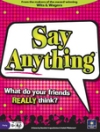
3-8 players, ages 13+, MSRP: $25
The makers of last years top party game, Wits and Wagers, is back with a slightly different spin on the popular Apples to Apples game by Out of the Box publishing. In Say Anything, one player reads aloud a question ((such as what’s the worst thing that could happen on a date) and all the other players try to come up with an appropriate response and write it down on a blank card. Players reveal their answers and the reader secretly chooses one. Players earn a few points for being selected by the reader, but earn the majority of their points by predicting whose answer will be chosen. This allows creative players to shine while players who know their opponents well will also earn points. A word of caution, while the questions are intentionally open-ended, the game can range from a “G” rating up into an “R” rating depending on the personality of the group involved.
Cluzzle by North Star Games

3-6 players, ages 13+, MSRP: $30
This fun little deduction game is a mix of simultaneous Pictionary and Play-doh. Players craft an object out of clay and then take turns asking questions about each others’ objects. Points are earned for being the first to correctly guess a sculpture and for how long it takes for others to guess one’s own structure. However, a penalty is applied if your object is so difficult to guess that no one gets it.
Kids Games
It’s great fun to play with your kids, but not if the game bores you to tears. Here are a few games for kids 6 or older that are also fun for adults.

Viva Topo! by Rio Grande Games
2-4 players, ages 4+, MSRP $45
This cute little game has players moving mice around a board to try to gather cheese, while a cat piece slowly chases them around the board, moving faster as the game progresses. A fun game where players are challenged to balance risk vs. rewards as they decide which goals to attempt. Although the game is playable by the very young (4+) it has enough to offer so that adults are not left simply twiddling their thumbs waiting for the game to end.

Arthur saves the planet by FRED Distribution
2-5 players, ages 6+, MSRP: $25
In this group game based on the popular PBS franchise players cooperate to try to solve various environmental problems, the game still manages to have enough going on to be interesting to older players. Players can spend their turns gathering resources or moving to different areas of the board to solve problems. A balance between resource gathering and moving around needs to be maintained or the problems won’t be solved. While the box says ages 6+, you can also push this game a bit younger if there are older players around to help out.

Pickomino by Rio Grande Games
2-7 players, ages 8+, MSRP: $25
I simply love this push-your-luck game as it is portable, quick to play, and simple to teach. Everyone is a bird trying to claim worms which are displayed on domino-like tiles. Players take turns rolling dice Yahtzee-style trying to earn a high total of pips Once you’ve rolled a high enough total of pips you are allowed to choose a tile showing a picture of one to three worms. However, if you push your luck too far you may “worm out” and have to give up one of your previously won tiles. In a nice bit of nastiness, if another player rolls the exact number of pips showing on your most recent tile, they can steal a tile directly from you. When all the tiles have been claimed or removed from the game, the winner is the player with the most worms showing on their tiles.
Family Games
These games are appropriate for a wide age range, play quickly (under an hour), and have fairly simple rules – just right for a family game night.
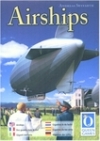
Airships by Rio Grande Games
2-4 players, ages 8+, MSRP: $40
Perhaps my current favorite “lightweight” strategy game, in Airships players try to build up a competitive zeppelin construction company. The game contains three type of six-sided dice: white, red, and black with each color showing higher and higher numbers. For example, the white dice range from 1 to 3 while the black dice display anywhere from 4 to 8. Each player’s company has six open slots that can be filled with a card. On your turn, you choose an available card and attempt to roll the requisite number shown. If you are successful, you gain that card and place it in the appropriate slot on your company board. For example, I may own two red and three white dice and may attempt to claim a card valued at 10 with two white and one red dice. I would then roll all my dice and see if I can make a combination of any two white and one red dice that total up to 10 points. In addition to claiming cards that improve your company (typically by adding more dice to your pool or giving you bonuses in special situations) players can earn victory points by trying to claim cards representing completed zeppelins. When the game ends, players add up their victory points and declare a winner. The game plays quickly but still gives players a bit of control over their destiny as they can specialize in particular colors of dice or attempt to build smaller zeppelins or go after one or two big ones.
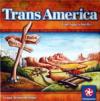
Transamerica by Winning Moves
2-4 players, ages 8+, MSRP: $30
In one of the simplest “train games” around, players draw five cards that display five different cities on the game board representing a map of the United States. Players then take turns placing wooden pieces representing “track” to try and connect up their five cities. Once your home base is connected to another player’s network you can both use each other’s network of track. Once a player has connected all five cities, play stops and players lose points based on how many more sections are needed to connect to their final destinations. The board is cleared, five new cards are drawn, and another round begins. The game continues until someone loses at least 12 points, at which time the player who has lost the fewest points wins the overall game. Simple rules, quick gameplay, and a bit of room for strategy combine to make this a solid recommendation for nearly any family.
Family Strategy Games
Games with a bit more depth and planning, but still accessible by a wide age range.
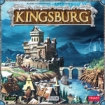
Kingsburg by Fantasy Flight Games
2-5 players, ages 10+, MSRP: $50
In Kingsburg, players attempt to build up a town over the course of several years. In each season, players roll three dice and then claim numbers (from 1 to 18) to obtain resources such as wood, gold, or stone. Higher numbers provide more and better resources, but players with the lowest totals get to pick first. Players may then turn in resources to build a building. Each building offers a minor advantage to the owner, the most common property is an increase in a player’s army’s strength. This is important since the fourth season of every year consists of an attack on the town. If the attack is greater than a player’s defense they suffer setbacks while a successful defense provides a small bonus. All buildings provide victory points and there are a number of ways to earn points with dice as well. The game is fun as it has a nice balance of luck and strategy. Rolling too many low numbers can set you back but making do with what you have is an important skill. The game components are top notch with colored dice for each player and a richly colored board, helping to draw casual players into the theme.
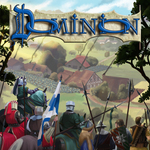
Dominion by Rio Grande Games
2-4 players, ages 10+, MSRP: $45
Perhaps my favorite game of the year, Dominion challenges players to use a starting deck of cards to purchase more cards. Those purchased cards are then added to the deck and can be used to help purchase more cards. Players continue to improve their deck of cards until the end of the game looms near and they being purchasing victory point cards. Victory point cards do not help your deck at all, they simply get in the way. However, at the end of the game, the player with the most victory points wins. A four player game can be explained and played in about an hour, and experienced players can get through future games in as little as 20 minutes. While some cards are basic to the game (money and victory point cards), there are 10 stacks of special action cards that can be bought in each game. These 10 action card stacks are chosen at the start of the game from 25 different possible ones included in the box. This means there are a huge number of variations available making sure the game doesn’t grow stale any time soon.
Strategy Games
A few games for those that like a deeper, longer game experience. The examples here are on the lighter end of heavy game spectrum, clocking in at about 45 to 90 minutes.
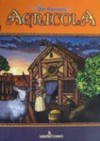
Agricola by Z-Man Games
1-5 players, ages 12+, MSRP: $70
Agricola is the other game in contention for my personal game of the year. Players begin the game with a small farm in the 1600s consisting of a house and two family workers. Players take turns using their workers to select actions on the game board such as gathering wood or clay, building fences, expanding their house, plowing fields, or even starting a family (to increase the number of actions you are allowed). Every few turns, players must feed their family so the game is a careful balance of building for the future and finding enough food for the present. The game starts somewhat slowly, but as players build up their family more actions are available each turn. However, the harvest round (where you need to feed your family) also begins to happen more frequently. Players can specialize in a few things like raising animals or building home upgrades, but the scoring system rewards those who manage to also do a little bit of everything. The game can be played with a family version, which is fun and contains nearly all the basic ideas. However, the advanced game introduces special cards for each player. Players start with a hand of 10 professions and 10 special upgrades they can use within the game. These cards often allow players to excel at one or two things (such as producing vegetables, or gathering lots of wood) which greatly increases the effectiveness of players’ workers. These two sets of 10 cards are drawn from a very large possible deck of cards (really, one moderate deck and then several more expansion decks which can also be shuffled in) so the starting conditions of the advanced game are always different. This adds just a touch of randomness to the mix, but greatly increases the replay value of the game as the player who is most effective at taking advantage of their starting hands of cards will typically win the game. A full game of 5 players can last awhile (around 2-3 hours for a game with new players) but later plays approach the single hour mark. In the classic mark of great games that inspire hard decisions, players are almost always wishing they had just one more action and just one more turn at the end of the game.

Race for the Galaxy by Rio Grande Games
2-4 players, ages 12+, MSRP: $35
For a deep, economic based strategy game that plays in under an hour, it is hard to go wrong with Race for the Galaxy. The game uses an elegant system where cards are used to represent nearly everything in the game including buildings (granting special powers), planets (increasing production), resources (by placing them face down under planets), and money (cards in hand are used to purchase planets and buildings). The game is played in rounds with each round having five phases. Every round, players choose which phase they want to occur. Only those phases selected by a player occurs in a given round, the other phases are skipped. If any player chooses a phase, all players may participate but a player who chooses a phase gains a special benefit for that action. For example, a player who chooses the development phase may build a development for a reduced price, although all other players may still build a development at full price. The fun in the game comes through the interaction of each phase and the many possible paths to victory. One player may try to build many planets, produce goods, and then consume them by turning them into victory points while another player might focus in on building many different developments. At the end of the game, victory points from consuming goods are added the points displayed on all of a players settlement and development cards to arrive at a total. Race for the Galaxy has a lot going for it: it plays in under an hour, has multiple victory paths, has almost no downtime (as players act simultaneously in each phase), and is extremely portable consisting of a deck of cards and a small pile of victory point tokens.
Wargames
Whether you want to reexamine historical events or enjoy a fun little fantasy combat romp, here are a couple of choices for wargame fans.
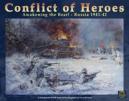
Conflict of Heroes by Elfinwerks
2 or 4 players, ages 10+, MSRP: $75
I came across Conflict of Heroes while touring the booths a GenCon this past fall. While I do not play many wargames, I found it to be a great example of what can be done to streamline what can often be a complex genre into a very playable game. Players set up a scenario using one of half a dozen hexagon-filled boards and then recreate battles of WWII. Play is done via an action point system, so if one player moves their tank into range of their opponent’s units those units can instantly activate and fire, prompting a reaction from the first player, and so on until players use up their allotted action points for the round. This system also allows some interesting simulations of real-life advantages. German tanks were often out performing their counterparts, even though they weren’t necessarily better built. The game reflects this by giving a lower activation cost to German tanks which means they can maneuver into advantageous positions (such as a rear or side assault) more easily. Most of the combat statistics of units are displayed right on the large, thick cardboard pieces and provide a fast resolution of combat even with the inclusion of a difference between hard (armored) and soft (soldiers) targets. The provided scenarios run the gamut of situations including some losing scenarios where one player is simply trying to hold on as long as possible in order to score a win. In summary, Conflict of Heroes is a very sharp looking game containing a fair bit of wargame depth while simultaneously streamlining rules and gameplay to make it accessible even to a casual wargamer.
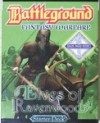
Battleground: Fantasy Warfare by Your Move Games;
2 players, ages 10+, MSRP: $15 per deck
If you have every wandered into a game specialty shop you may have noticed large groups of plastic armies facing off against each other across a miniature battlefield. The cost for playing in these complex battlefield simulations can be quite high, requiring the purchase of many little plastic or pewter figures as well as rules guides and expansions. Your Move Games has brought a lower cost solution to the gaming table via their card based miniatures line, Battleground: Fantasy Warfare. Rather than use miniatures, each figure in the game is represented by a playing card, complete with statistics alongside the artwork. Players construct armies using a point system to balance the teams and then take turns activating and managing their armies as they meet and fight on the battlefield. By putting the cards in sleeves, players can even use grease pens to track damage and other information right on the cards. The primary advantage of this system is the cost. At a mere $15 for a starter deck (which is NOT randomized but a specific set of cards in each deck) a player gains a set of rules, a deck of command cards (used for thematic special abilities), and enough army cards to field two small armies to try the game out. If things click a reinforcement deck can be purchased (for $15 again) that adds in a few more army card types but primarily adds in more of each army card so more diverse armies can be fielded. There is an entire line of different armies to try out including knights, elves, undead, lizardmen, monsters, and others – each having their own starter and reinforcement decks. While most of the current armies tend to be on the fantasy side of things, there are a few more historical army decks in the works. If the idea of playing out a deeper, miniatures style wargame appeals to you but you’ve always been hesitant about the expense, Battleground: Fantasy Warfare is a great first exposure to the genre for a much cheaper price.
Recycle Your Games
Have a favorite game that has become a bit stale? Buy an expansion to put a new bit of zest in an old favorite.
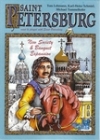
St. Petersburg Expansion by Rio Grande Games
2-5 players, ages 10+, MSRP: $25
Saint Petersburg is nice family-friendly strategy game where players take turns bidding for cards that represent income sources, buildings, and influential people. The game is played in rounds of four phases with each phase dedicated to a different kind of card. Players can earn money and/or victory points in each phase throughout the game, with bonus awards for collecting many different influential people at the end of the game. While I enjoy the game as it stands, there are a few very minor issues in the game. This expansion fixes those issues and introduces a number of new cards to the mix to make the game fresh again. It also provides rules and components to expand the game up to five players. If you already have the basic game, you should definitely check out the expansion. If you haven’t played the basic game, it is a highly recommended classic game suitable for family play.
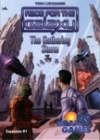
Race for the Galaxy: The Gathering Storm by Rio Grande Games
1-5 players, ages 12+, MSRP: $25
Currently one of my top five games, Race for the Galaxy already has its own expansion. In addition to adding a few new cards to provide more options for players, the expansion also expands the game to include up to five players as well as provide rules and components for a solitaire game version. The other main addition to the game is a set of large and small goals added into the game. The small goals revolve around being the first player to achieve something, such as five victory points or having three alien cards, while the large goals provide points for being the player with the most of something, such as the most production planets or the most development buildings. While the expansion isn’t needed to enjoy the game, I expect anyone who tries the game to enjoy it enough to want the expansion as well.
Games for Your Inner Geek
Admit it, you’re surfing the internet to read up on boardgames, that means you’re probably a fan of many other technophile hobbies. Here are some selections that make a great gift for just about any geek.
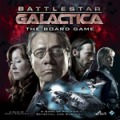
Battlestar Galactica: The Board game by Fantasy Flight Games
3-6 players, ages 10+, MSRP: $50
Fans of the popular television remake of Battlestar Galactica should look no further than the new boardgame by Fantasy Flight Games. Players take on the role of one of 10 main characters from the show and band together to try and defend the fleet from resource shortages and political unrest. Meanwhile, one or more players are actually secretly in league with the Cylons, and may not even find out until midway through the game. Players strive to accomplish the game’s goals while simultaneously trying to root out the secret traitor. While the game is good by itself, fans of the series will be able to appreciate the many special events and situations taken directly from the television series.
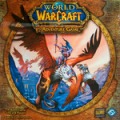
Wow the adventure game by Fantasy Flight Games
2-4 players, ages 12+, MSRP: $40
Several years ago, World of Warcraft: The Boardgame was released that had two teams of horde and alliance characters journeying around a game board in order to be the first to level up and fight the big bad guy at the end. While it captured some of the fun of leveling up a WoW character it also took quite a long time to play. In this new game, World of Warcraft the Adventure game, players again try to adventure around to level up their character and win the game, but this time around the game is much more streamlined and players are looking out for themselves. Each character in the game has their own deck of power and ability cards, and future expansions will add to the selection of characters. With a faster and more streamlined game, WoW the Adventure Game is a better choice for gamers looking for something a bit shorter and lighter than the full blown, team-based WoW the Boardgame.
Role Playing Options
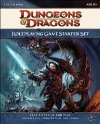
One of the bigger news items for the year was the release of the 4th edition of Wizards of the Coast’s Dungeons and Dragons. To play the new game, which is a very sleek reinvigoration of the franchise, one needs a copy of the three core books: the Player’s Handbook, the Dungeon Master’s Guide, and the Monster Manual. However, that is fairly expensive and if you want to try out the new game without spending a lot of cash, this fall Wizards has released a handy Starter set for about $17 which contains rules, a sample adventure, dice, cool colored cardboard tokens, and even a few map tiles. Everything you need to play for a couple levels of the game is included. There are even rules for continuing the adventure using sample monster opponents at the back of the book. After playing through the starter set, which could easily take a half-dozen or so evenings of gaming, you should have a good idea of whether to invest in the full set of books. If you do, the starter set leaves you with some handy tokens, map tiles, and dice that you can use as you move on to broader pastures.
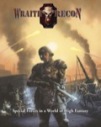
Wraith Recon by Mongoose Publishing
The 4th edition of Dungeons and Dragons is new enough that there are only a few third-party enhancements and expansions available to date. One of these is the Wraith Recon setting by Mongoose Publishing. The 4th Edition brings in a faster playing role-play experience at times almost reflecting the game styles found in modern video games like Diablo or World of Warcraft. Wraith Recon provides a setting that takes that idea and runs with it. Rules and background are provided to supply players with all they need to run a campaign based around a special forces combat unit. Players form a special ops unit and are given challenging tasks not normally assigned to the military. Of course, they are also supported by the best resources and gadgets the kingdom can provide. The main sourcebook with all the background material runs around $35, while upcoming designed adventures will run a bit less.
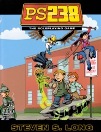
PS238 / Champions by Hero Games
One of my favorite role playing games (RPGs) is the Champions world based off the Hero rules system. While it does involve a lot of math to design characters, the system is immensely flexible and fun. It can be used to create nearly any superhero you can dream up and given a few guidelines they will even be roughly balanced so that one player does not unbalance the entire party. Just this past year, a new supplement (MSRP $32) was released that brings the world of kindergarten superheroes of Aaron Williams, PS238. While having the full Hero rules gives more flexibility, everything needed to role play the life of an 8 year old Batman, Superman, or Green Lantern is included. Fans of the PS238 comic series may want to pick up the book just to read the bios and history of many of Aaron’s characters.
Stocking Stuffers
A couple of game ideas small enough to fit into a stocking…

Falling by Titanic Games
4-8 players, ages 10+, MSRP: $10
This quick little card game about falling through the air is played in real time. One player serves as the dealer and begins slowly dealing out cards one at a time to each player. Players use the cards dealt them to defend themselves and interfere with the other players with effects that might add new piles, give extra cards, or allow you to skip a turn. As the deck is dealt out, the final few cards represent the ground. The last player without a ground card wins the game (and hits the ground last – whee!).
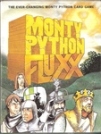
Monty Python Fluxx by Looney Labs
2-6 players, ages 8+, MSRP: $20
If you have always felt there was too little zaniness in your games, look no further than Monty Python Fluxx. This is a new version of Fluxx, the card game that starts with two basic rules – draw one card and play one card. As the game progresses, players add new rules (like changing the number of cards drawn or played) and even change the final game-ending goal (such as trying to have both the Sun and the Moon card in play.) The new Monty Python version adds in flavor text and card art from the popular television and movie franchise. Players might need to collect the comfy chair, a dead parrot, or a wedge of cheese while watching out for dangers like the Spanish Inquisition or a fluffy bunny. Many cards have special features for fans of the show like one card that rewards players who can sing a snippet of a new Python song each round. Another card affects only cards with “it” in the title and still another affects any card that mentions the number three. As with standard Fluxx, there isn’t a deep game here but there is a fun social activity full of surprises and laughs as cards are played. Those unfamiliar with the show will find a decent activity/game, but the game is quite fun for fans.
Conclusions
No matter what toys and presents the holidays bring, be sure to keep time in your schedule for playing with friends and family. While the games here come highly recommended to provide fun for a wide range of players, there are plenty other choices available. For recommendations from past years, stop by the Unplugged Holiday Guides for 2003,2004,2005,2006, and ,2007. Some of these games may be found in larger stores, but you may need to visit (or order from) a store specializing in games to find the rest in this list. If they don’t have it in stock, chances are high they’ll be able to order a copy for you.





Discussion Area - Leave a Comment